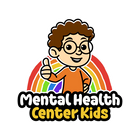In this article, I’d like to share a brief introduction to DBT, including a quick overview of the 5 DBT modules. For a more comprehensive coverage of this topic feel free to read my articles on DBT for Kids and DBT for Teens.
Is your child struggling with big feelings that seem to pop up out of nowhere? Do they get easily upset over small things?
In my practice, I work with highly sensitive kids who often react in big ways because they’re unsure how to handle their overwhelming feelings. This can lead to things like temper tantrums, emotional outbursts, conflicts with others, or even hurting themselves when they feel stuck.
Some of the most effective tools I use are skills from Dialectical Behavior Therapy (DBT).
If you haven’t heard of it before, it’s a form of evidence-based therapy that helps people deal with difficult emotions and behaviors.

What Does the Research Say About DBT for Youth?
Whereas therapies like Cognitive Behavioral Therapy (CBT) focus on shifting negative thought patterns and problem-solving, DBT combines problem-solving with techniques that help youth including their families, accept the emotions and challenges they’re going through even when they cannot change a situation.
Take, for instance, a teen diagnosed with a chronic illness like diabetes who might be feeling overwhelmed by the need to monitor their blood sugar levels every day. In this situation, practicing mindfulness — a core DBT module — could teach the child to focus on the present moment instead of their worries about the future or frustration about their illness.
DBT also helps people cope better and improve their relationships with others.
A Brief Introduction to the 5 DBT Modules
DBT has five core modules that include a variety of specific skills. Let’s discuss each:

-
Mindfulness. This teaches children to put their full attention to the present. One of the skills involved in mindfulness is being non-judgmental of their thoughts, experiences, and other people they interact with.
-
Distress Tolerance. Kids who learn distress tolerance can avoid impulsive reactions in moments of intense stress. For instance, if they’re arguing with a friend, they can stop and take a step back, and take deep breaths to calm down.
-
Interpersonal Effectiveness. This module is useful for situations where effective communication is needed to maintain or build healthy relationships. For example, a child who has difficulty speaking up for themselves may use the skill called DEAR MAN to say “no” clearly and confidently.
-
Emotional Regulation. Here, they learn to recognize their feelings and reflect on why they feel a certain way. If they feel sad after losing a game, they would name the emotion (sadness, frustration, anger, etc.), check the facts, and engage in an activity that would calm them down.
-
Walking the Middle Path. As the name suggests, walking the middle path is about finding a middle ground. It teaches young people not to get caught up in black-or-white or all-or-nothing thinking. Here are some skills to practice in this module.
Life isn’t perfect, but by teaching our children DBT skills, they can learn to manage their thoughts and actions, which will benefit them in difficult situations. For more digital DBT resources, explore our DBT handouts and worksheets collection.
This article was originally published in our email newsletter on January 21, 2025.























































